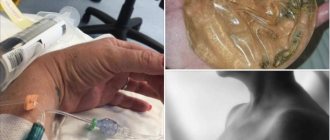Scars after chickenpox are one of the complications of the disease that occurs at the site of a blistering rash characteristic of the infection. They look like small, shallow pits and most often appear due to late treatment or improper skin care. You can get rid of the unpleasant consequences of the disease on the face and body with the help of a number of medications and proven folk recipes.
Scars after chickenpox: will there be or not?
Whether there will be skin defects after the disease depends on the timely start of treatment and the correct use of ointments (gels).
Scars after chickenpox usually result from scratching the rash until it bleeds. When pyogenic bacteria are introduced under the skin, the deep layers of the epidermis are injured.
Modern ointments, which have anti-inflammatory properties, antibacterial and antiviral effects, significantly reduce the intensity of itching and instantly destroy the infection. This means they save you from further formation of scars, large pits, and scars.
To avoid the appearance of deep, large pockmarks, the rash should be lubricated immediately.
Specifics of treatment in adults
Adults tolerate chickenpox much worse; their body intoxication is higher than that of children. High temperature and frequent suppuration of papules lead to complications.
The skin's ability to recover fades over time, so the appearance of scars in adults after chickenpox is a fairly common occurrence; they need to be treated immediately, as soon as the disease has subsided.
Removal or smoothing of scars in adult patients can be achieved through physical therapy. Procedures actively used:
- Electrophoresis - this method gives a positive result on scar tissue, relieves inflammation, nourishes the skin, and also speeds up metabolism. This procedure is absolutely painless and does not cause side effects.
- Phonophoresis is an effective correction of scars, helps reduce the volume of the scar, normalizes coloring and increases skin elasticity.
- Paraffin therapy - used to correct scars and their resorption.
What to do to avoid scars on your face and body after chickenpox
We list the names of highly effective drugs and the main rules for relieving rashes with various drugs.
What to smear
In the acute stage of the rash, it is necessary to immediately lubricate it with antiviral agents. They suppress the activity of virions and prevent penetration into skin cells.
Virus-inactivating ointments
It is necessary to treat 4-5 times a day not only the elements of the rash, but also the adjacent areas of the skin around.
- Gerpevir. The active ingredient is Acyclovir. The ointment is approved for use from 3 months of age onwards.
- Viferon. Contains recombinant human interferon. Chickenpox can be treated from the first days of birth.
- Zovirax. The cream is based on Acyclovir. Allowed for use from 1 month.
The ointment layer should be very thin. Apply it with light touches, trying not to damage the integrity of the bubbles (so as not to spread herpes virions throughout the body).
Anti-inflammatory ointments with regenerating properties
During the formation of crusts in cases where bacterial pathogenic microflora is attached, it is necessary to use antimicrobial ointments that destroy all types of infections:
- Betadine.
- Panthenol (spray).
- Bepanten.
- Zinc ointment.
Apply daily 2-3 times from 4 to 10 days.
Antihistamines
If a child suffers from unbearable itching, drugs with pronounced antihistamine effectiveness will help eliminate it:
- Calamine lotion.
- Gels PoxClean,
- Reglisam.
- Fenistil.
- Suspension Tsindol.
- Cream La-cree.
Application – 3-4 times a day. Duration of use - until the itching disappears.
The dermatologist decides which drugs to use in each specific case. Here we provide only general information about the appropriateness and methods of use for a child.
Ointment for chickenpox rashes against scars for adults
What, how much, how to use during the period of bubble formation is given in the table below.
| Antiviral drugs | Antihistamine ointments | Antimicrobial (for pustules) with regenerating properties |
| Acyclovir (ointment) | Psilo Balm | Madecassol |
| Bonafton (ointment) | Gistan N | Oxacillin |
| Panavir (gel) | Iricar | Baneocin |
| Herpferon (ointment) | Fenistil Pencivir | D Panthenol |
| Infagel | Betazon plus. | Solcoseryl |
| Treat the affected skin up to 5 times a day for 6 to 10 days. | To reduce itching and inflammation, the products are applied 2-3 times a day for 5-8 days. | By appointment only. Lubricate 2 to 3 times a day for no longer than 10 days. |
The sooner intensive medicinal effects on herpes viruses begin, the sooner chickenpox will stop. The use of all types of ointments, taking into account the doctor’s recommendations, 100% guarantees the preservation of a smooth, even and delicate surface of the skin of the face and body after the most severe degree of the disease.
Where do skin defects come from?
During illness, a rash in the form of blisters with liquid is localized on both the face and body. After a couple of days, the bubbles explode and in their place a dried crust forms, which disappears after some time. The most depressing aspect of the disease is that the rash provokes quite severe itching, which is sometimes very difficult to adapt to.
If the patient still could not resist and scratched the blisters, this could result in him getting a bacterial infection, which evolves into inflammation, suppuration and will result in mutilation of the deep layers of the skin, as a result of which pits will appear on the face. The pits will not be able to heal themselves and will not go away over time, but on the contrary, they will become rougher. Curing them becomes quite a difficult task.
Simple therapy can help remove scars that have just appeared, but already formed potholes can only be removed through surgery. As a result of chickenpox, the patient is left with traces, which are most effectively dealt with immediately after recovery.
There are various products for external use: ointments, creams, gels, balms, and so on, which will help remove superficial and deep scars from chickenpox. At the pharmacy you can purchase a huge variety of domestic and foreign medicines. The main substance in them is pantothenic acids.
How to remove already formed fresh scars after chickenpox on the face
To smooth the epidermis immediately after an illness, it is necessary to use ointments that contain natural collagens and vitamins. In some cases (to avoid scar growth) it should be lubricated with silicone creams.
Adults
In adulthood, the skin noticeably loses its ability to quickly self-regenerate, so restoration of the epidermis occurs slowly. Sometimes the period of treatment of fresh pits and scars after chickenpox with the most potent ointments extends for 2-3 months.
The following gels and creams are ideal for daily lubrication:
- Fermenkol.
- Mederma.
- Skargard.
- Contratubeks.
- Kelo-cat.
After the face is completely cleared of the scabs that covered the rash blisters, the medicinal compositions of these creams (ointments) are applied in a thin layer to the affected skin 2 times daily.
Alignment of shades and smoothing of the surface of the epidermis occurs after approximately 30-60 days (depending on the size, density and depth of the scars).
Children
In children and adolescents, scars after chickenpox are quite rare. If treated incorrectly, shallow pits may form, which can be smoothed out with completely harmless ointments with herbal bioactive ingredients:
- Scar Zone Provamed (Thailand).
- Bio Oil (from South Africa).
- Skagel Kids (Thailand).
- My sunshine - with panthenol (Russia).
- Children's cream (for bruises and abrasions).
- Rescue balm for children.
You should ask your dermatologist about the advisability of long-term use of cream to eliminate defects after chickenpox. Often no treatment is required.
Recommendations for scar treatment
When treating signs of chickenpox, patients should understand that they cannot be completely eliminated. No medications will help restore the skin to its original smoothness. They give good results, but do not eliminate the consequences completely.
In the process of healing scars, you need to rely on the regenerative capabilities of the body. If a person previously wanted to have plastic surgery, then over time it may not be necessary. This is due to the fact that the scars after chickenpox become smaller and smooth out.
You need to make a decision after a year, based on the changes that have occurred.
In cases where the marks are very noticeable, you need to seek help from a dermatologist.
How to get rid of scars and old scars
If the lesions on the skin after chickenpox are of long-standing origin, are excessively deep, and occupy a large area of the skin, then regenerating and keratolytic drugs will be required.
List of ointments for adults
The ointment gradually resolves scar tissue, restoring elasticity and firmness to the skin. Smoothes the surface of the upper layer of the epidermis, and also brings red spots to a natural shade. The following drugs are effective:
- Dermalix.
- Sledocid.
- Methyluracil.
- Contratubeks.
- Zeraderm Ultra.
- Kelofibrase.
Can be used no more than 3 times a day. Do not allow the ointment to penetrate into the eyes. The process of completely getting rid of old scars lasts from 2 months to six months.
To improve effectiveness, you can fix the ointment with a bandage for 1 hour, then remove it. There is no need to rinse off the product.
If a negative reaction occurs (allergic rash on the body, swelling, severe hyperemia, runny nose), you should immediately wash off the ointment and do not use it again. Take an antihistamine tablet (Loratadine, Cetirizine, Suprastin).
List of medications for children and adolescents
Effective products approved for use without age restrictions:
- Contractubex.
- Elitsina.
- Dermatix.
- Zeraderm Ultra.
Directions for use: Apply a thin layer to scars at night. Repeat in the morning after washing. Treatment takes 1 to 2 months, after which the skin looks great. Even the deep layers are completely updated. Children do not cover the lubricated area with a bandage.
How to remove deep pits on the body and face
Next, let's talk about fast-acting drugs for temporary leveling of pits.
Collagen masks
The time for applying to the face is 20-25 minutes. Frequency of use: 1-2 times a week.
- Mask Gold PREMIUM Modeling.
- Crystal Mask with nanogold.
- Fabric placental mask (DIZAO).
- Medical Collagene 3D Express protect.
They are extremely necessary if you urgently need to smooth out the pits before attending a festive concert in the Kremlin, a scientific international forum, or a wedding palace as a bride.
Ointments
Slowly but surely they will get rid of deep depressions on the face and body:
- Contractubex.
- Mederma.
- Kelofibrase.
After 7-8 months, the pits will become less noticeable.
If ointments do not help, you will have to go to a cosmetic center for hardware treatment.
Salon treatments
Effective removal of deep pits and chickenpox scars is carried out using the following methods:
- Microdermabrasion.
- Ultraphonophoresis.
- Collagen injections.
- TCA peeling.
- Laser resurfacing.
- Electrophoresis, etc.
The procedures are carried out in hospital conditions under the guidance of specialists. If someone offers to perform the procedure at home, take pity on your (still) beautiful face.
Chickenpox scars are easier to prevent than to cure. Therefore, antiviral ointment should be used from the moment the first unbearably itchy spots of the rash appear, until they turn into blisters. Continue the comprehensive treatment until the skin is clear of crusts and vesicles. Modern ointments that effectively protect against the development of scars will help with this.
Possible complications
In addition to the main symptoms, chickenpox can lead to many unpleasant consequences and complications.
It should be noted that complications after chickenpox in children occur less frequently than in adults; chickenpox is very dangerous for a pregnant woman and her fetus.
Possible complications:
- Shingles.
- Viral pneumonia.
- Stomatitis. In this case, the affected areas appear on the mucous membranes of the mouth and tongue.
- Damage to the optic nerve.
- Encephalitis - the more severe the form of chickenpox, the greater the likelihood of this disease occurring.
- Inflammatory processes in muscle tissue.
- The appearance of raised, keloid scars.











